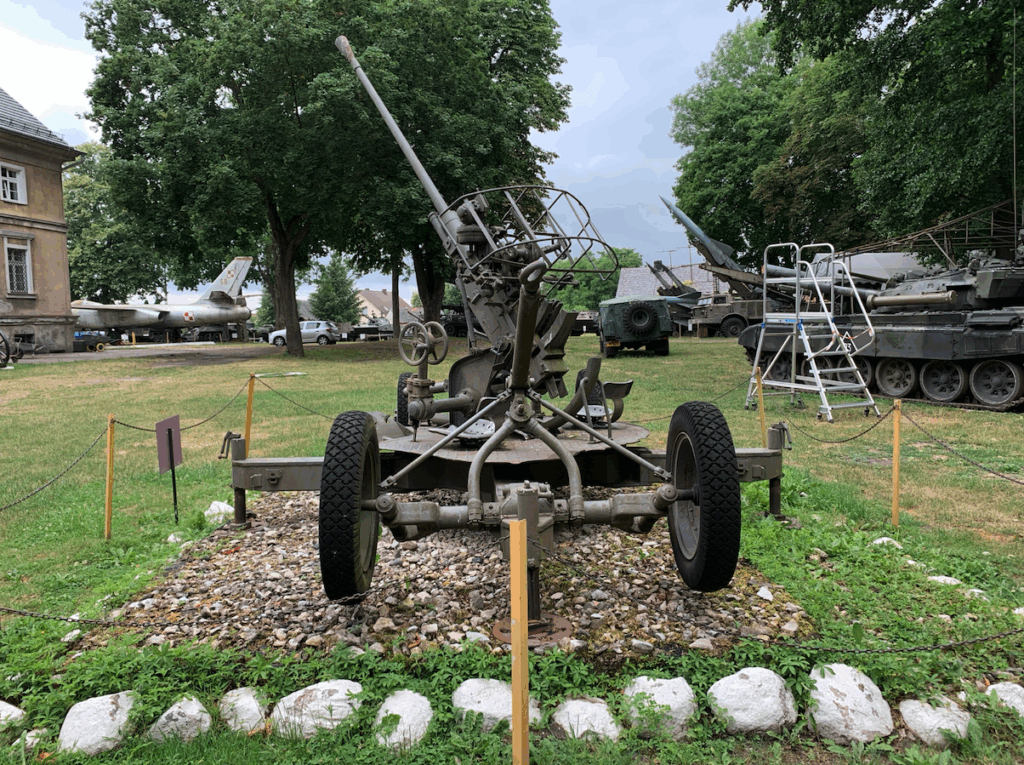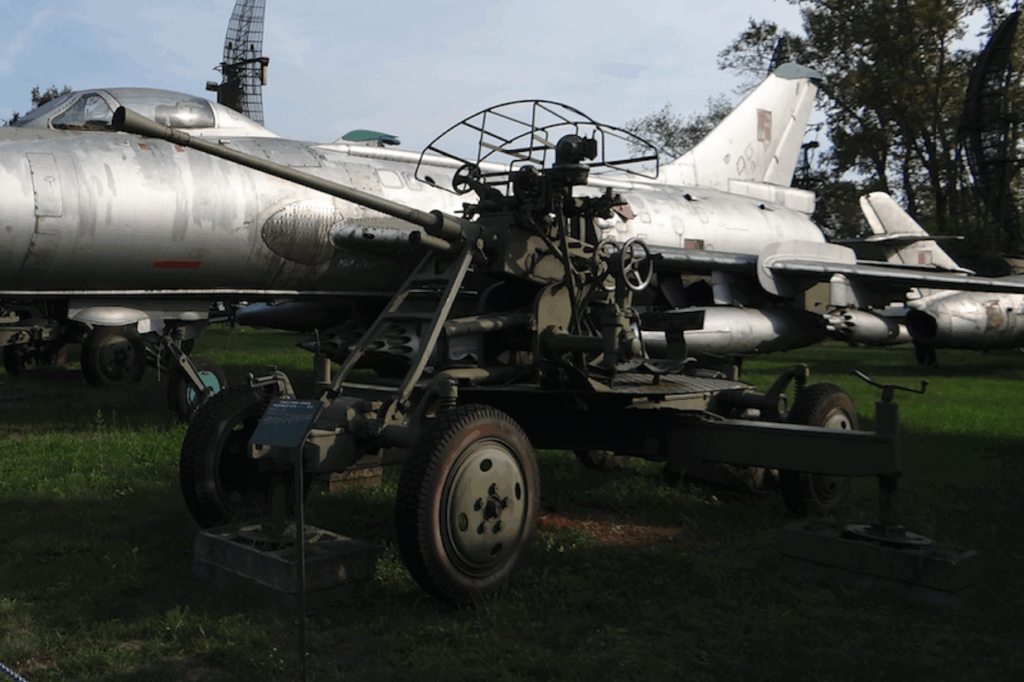Kraków 2025-04-30
Anti-aircraft gun wz 1939, 61-K.



The anti-aircraft gun wz 1939, 61-K (Russian: 61-К, GRAU index: 52-К) is a Soviet 37 mm anti-aircraft gun, widely used during World War II and in the post-war period, until the 1960s. 37-mm automatic anti-aircraft cannon, image 1939.
Basic specifications: Caliber 37 mm. Barrel length 67 calibers (about 2.5 m). 2 729 mm (with breech cap). Type of gun automatic, magazine feed (5-round arc magazine). Theoretical rate of fire 160–180 shots/min. Practical rate of fire 60–120 shots/min. Weight 2,100 kg (in combat position). Effective range (anti-aircraft) up to 4,000 m. Maximum range (horizontal) up to 6,700–8,500 m. Initial projectile velocity 872–880 m/s. The gun is towed by a truck or off-road vehicle. Transport speed up to 60 km/h. Unfolding time to combat position 25–30 seconds. Length in transport position 5.50 m. Vertical angle of fire -5 degrees to +85 degrees. Horizontal angle of fire 360 degrees.
Design: The 61-K gun was single-shot, self-loading (gas-operated automatic operation). Mounted on a four-wheeled towed base, with the possibility of quick transformation into a combat position. The crew operated in a team of 6–8 people. Aiming was carried out using optical devices (for example, the AZP-37 sight). It was an automatic gun, the automation of which operated on the principle of a short barrel recoil. Wedge lock, with a vertical movement of the wedge; feed from five-round boats. The gun was equipped with a hydraulic stop and a spring-loaded return. The gun could be equipped with a steel protective shield.
History and use: The gun was designed based on the Swedish Bofors 40 mm gun, but simplified and adapted to Soviet standards. The anti-aircraft gun model 1939 was designed by a team led by Mikhail Loginov. The prototype of the new Soviet anti-aircraft gun was sent for field trials in October 1938. However, it was not until late 1939 that Artillery Factory No. 8 produced the first 15 serial 61-K guns. The gun was introduced to the Red Army in 1939. The gun was used in large numbers during World War II, as well as in post-war conflicts. It also found its way into the armament of other Eastern Bloc countries, including Poland, the GDR, China, and North Korea. The gun was used not only in the anti-aircraft role, but also to fight armored vehicles and infantry. By 1945, 16,886 units had been built.
In Poland, during the times of the Polish People’s Republic, the 61-K guns were designated as 37 mm anti-aircraft gun wz. 1939. They were used by the Polish Army until the end of the 1960s, then gradually withdrawn.
Written by Karol Placha Hetman

